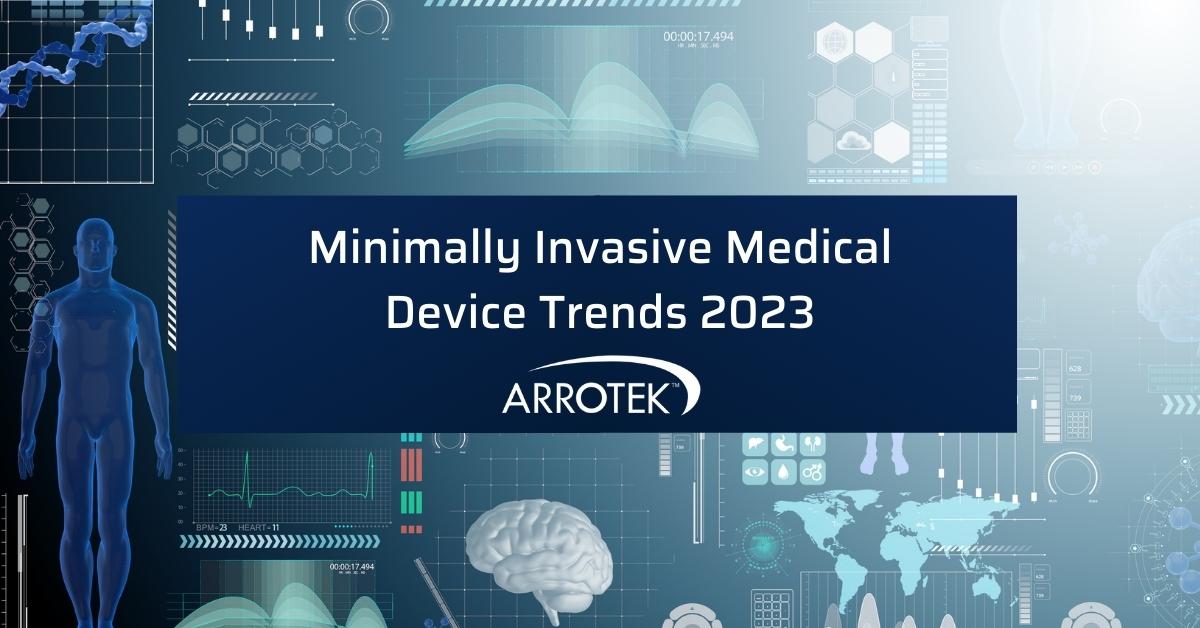With the development of new products, innovations, and technologies, analysts are predicting healthy growth in the medical device industry over the coming years. What are the main trends in MedTech as we go into 2023? More specifically, what are the trends in minimally invasive medical device design?
Prioritising Ease of Use, Clinical Outcomes, and Patient Satisfaction
We all live in a world of rapid innovation, where technology influences multiple aspects of our lives. It isn’t just any technology, either, as we are all now very accustomed to technologies that are easy to use, highly functional, and that deliver beyond expectations.
As a result, users and patients now also have high expectations when it comes to medical devices. They want rapid innovation, excellent outcomes, and ease of use. This has led to the full patient experience becoming a critical factor in the design process for new and updated minimally invasive medical devices.
This trend of user-centric design and the full patient experience is leading to further reductions in the size and weight of medical device products, as well as devices that feature multifaceted geometries and multiple substrates.
The outcomes of these innovations include the ability to perform new medical procedures as well as improving existing procedures. Treatment costs can also be reduced, and patient recovery times can be minimised.
The Patient as the End User
Wearable medical devices and other products designed for use in the home mean there is an increasing number of devices where the patient is the end user. These devices are transforming healthcare, whether it is simplifying the management of diabetes, increasing the quality of life for people with long-term medical conditions, or improving disease diagnosis.
More Sensors in More Devices
Sensors have been used in catheters and other minimally invasive medical devices for many years now. However, advances in sensor technologies, material engineering, and other breakthroughs mean sensors are becoming more prevalent.
This includes sensors that aid navigation, including detecting obstructions and presenting clinicians with real-time 3D images. Those 3D images are then also used when the device reaches the target location.
Sensors in minimally invasive medical devices are also used to collect essential patient data, such as body temperature, as well as procedure data, such as the pressure of the surrounding anatomy.
Increasing Convergence
There is an increasing convergence of medical devices, drugs, and data within single products, further enhancing the capabilities of devices while also improving usability, patient outcomes, and the full patient experience. Sensors, as mentioned above, as well as other electronics, are facilitating this convergence of MedTech, pharmaceutical, and data technologies.
Regulatory Adaptation
The past year or two has seen significant changes and updates to the regulatory landscape in many jurisdictions, including the US and EU. In the EU, for example, medical device companies are working through the implementation of the new EU MDR. Therefore, adjusting to new regulations and regulatory guidance will be a feature for many in the industry over the coming years.
Advances in Diagnostic Devices
There has always been a focus in healthcare on detecting diseases as early as possible. It makes sense, therefore, that there is a growing focus on the development of diagnostic devices to help detect disease at the earliest possible stage.
Advanced Manufacturing and Assembly Techniques
Designing and producing a prototype of a novel and highly innovative medical device is only one part of the development process, as the product must be manufacturable. This means there must also be continuous development and improvement of manufacturing and assembly techniques.
For example, minimising the number of components in a device during the design stage to reduce manufacturing complexity. Specialist manufacturing processes, such as overmoulding, can also be used to reduce the number of device components during production.
In general, the pace of innovation in manufacturing and assembly needs to keep up with the pace of innovation in product design.
Advancing Patient Care
The trends outlined in this blog not only highlight the rapid advances that are taking place in the MedTech industry, but also a maturing of the minimally invasive medical device design process. Combining new technologies and design innovations with a patient and user-centric approach will lead to significantly better health outcomes and patient satisfaction.





